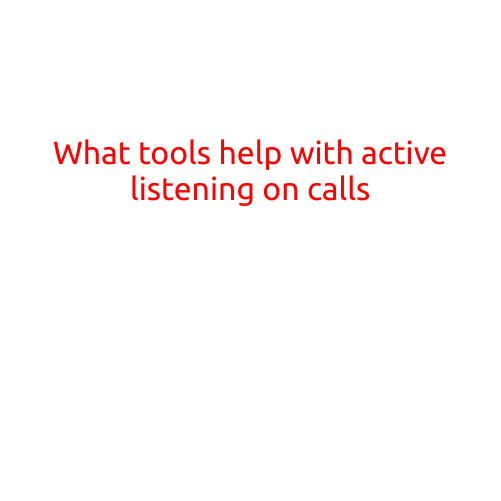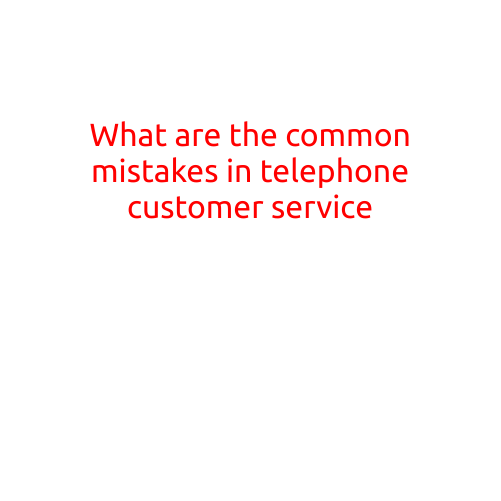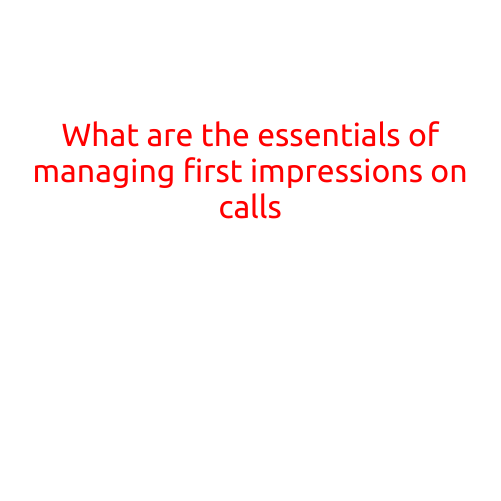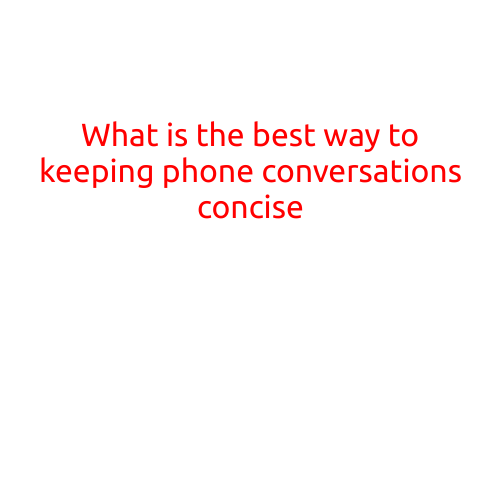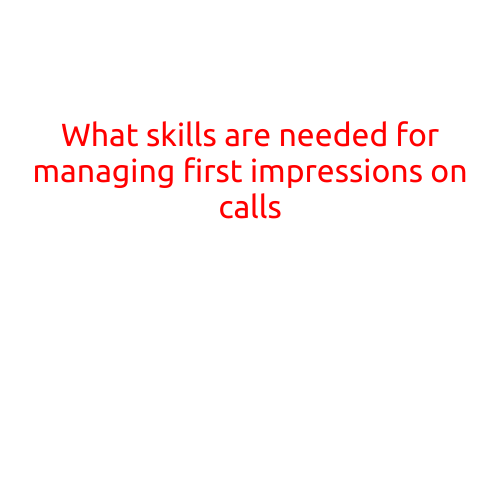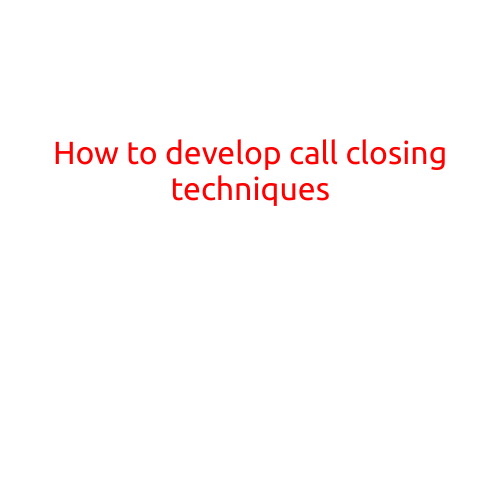
How to Develop Call Closing Techniques
As a sales professional, closing deals on phone calls is a crucial part of the job. Developing effective call closing techniques can help you turn prospects into customers, increase your conversion rates, and boost your sales performance. In this article, we’ll explore some tips and strategies to help you develop powerful call closing techniques.
Define Your Goal
Before you start practicing your call closing techniques, define what you want to achieve. Is it to schedule a meeting, make a sale, or generate a lead? Identifying your goal will help you focus your efforts and tailor your approach to achieving it.
Develop a Proactive Attitude
Sales is all about being proactive. Don’t wait for the prospect to ask questions or make a decision. Instead, take the initiative and ask questions that guide the conversation towards closure. This shows that you’re interested in the prospect’s needs and willing to work together to find a solution.
Use Open-Ended Questions
Open-ended questions are powerful tools for closing calls. They encourage the prospect to share more information, reveal their needs, and create opportunities for you to offer solutions. Examples of open-ended questions include:
- Can you tell me more about your current situation?
- What are your biggest challenges in this area?
- How do you see this product or service fitting into your long-term goals?
Listen Actively
Active listening is essential for closing calls. Pay attention to what the prospect is saying, ask clarifying questions, and respond thoughtfully. This shows that you’re engaged, interested, and care about their needs. Active listening also helps you identify potential objections and address them proactively.
Create a Sense of Urgency
Prospects often delay making a decision because they’re not convinced or haven’t had time to think about it. Creating a sense of urgency can help overcome this objection. Use phrases like “limited time offer,” “limited availability,” or “immediate action required” to create a sense of urgency.
Handle Objections
Every sales call encounters objections. Anticipate common objections and be prepared to address them proactively. Use the techniques below to handle objections:
- Acknowledge the objection and show empathy
- Provide a clear explanation or solution
- Highlight the benefits and value of your product or service
- Offer alternatives or compromises
Use The FAB Framework
The FAB framework is a powerful tool for closing calls. FAB stands for Features, Advantages, and Benefits. Use this framework to explain your product or service by:
- Highlighting the key features
- Explaining how these features create advantages
- Emphasizing the benefits to the prospect
Create a Clear Call to Action
A clear call to action (CTA) is essential for closing calls. Make sure you’re specific, direct, and concise with your CTA. Examples of CTAs include:
- “Shall we schedule a meeting to discuss further?”
- “Are you ready to move forward with the purchase?”
- ” Shall we send over a proposal for your review?”
Practice, Practice, Practice
Closing calls is a skill that requires practice. The more you practice, the more comfortable you’ll become with different scenarios, objections, and techniques. Set aside time to role-play, practice your pitch, and refine your approach.
Conclusion
Developing effective call closing techniques takes time, effort, and practice. By defining your goal, developing a proactive attitude, using open-ended questions, listening actively, creating a sense of urgency, handling objections, using the FAB framework, creating a clear call to action, and practicing regularly, you’ll be well on your way to closing more deals on phone calls. Remember to stay focused, adaptable, and committed to your goals, and you’ll see your sales performance improve over time.
